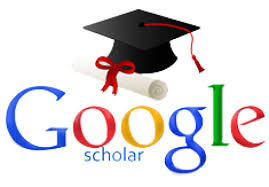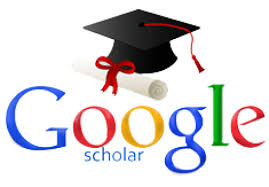Penguatan TPACK Bermodel SAMR Berbasis Mobile-Aided Instruction bagi Guru SMPN 2 Padang Panjang
 ), Nur Rosita(2), Meira Anggia Putri(3),
), Nur Rosita(2), Meira Anggia Putri(3), (1) Universitas Negeri Padang
(2) Universitas Negeri Padang
(3) Universitas Negeri Padang
 Corresponding Author
Corresponding Author
Copyright (c) 2023 ABDI HUMANIORA: Jurnal Pengabdian Masyarakat Bidang Humaniora
DOI : https://doi.org/10.24036/abdihumaniora.v5i1.125485
Full Text:
 Language : in
Language : in
Abstract
Data Neraca Pendidikan daerah kemendikbud yang menunjukan nilai rata-rata Uji Kompetensi Guru (UKG) nasional berada di poin 53.02. Nilai ini tentu saja masih jauh dalam target Standar Kompetensi Minimal (SKM) 55. Sementara untuk wilayah kota Padang Panjang sendiri adalah 64.28 dan kompetensi guru pada level Sekolah Menegah Pertama berada diposisi kedua lebih rendah dibandingkan guru Sekolah Menengah Atas (SMA). Selanjutnya kompetensi terendah ada pada kompetensi pedagogik. Hal ini tentu menjadi sumber masalah dalam keberlanjutan proses pembelajaran. Solusi yang ditawarkan untuk mengatasi masalah ini adalah dengan memberikan bimbingan teknis penguatan pedagogik dalam framework TPACKatau Technological Pedagogical Content Knowledgemelalui model pembelajaran SAMR (Substitution, Augmentation, Modification, and Redefinition) berbasis Mobile Aided Instruction.TPACK adalah framework pengetahuan guru abad 21 yang berguna menunjang skill pengajaran. Sementara SAMR adalah model pembelajaran yang mengintegrasikan teknologi di kelas. Pengetahuan dan model ini dapat didukung pelaksanaannya oleh aplikasi-aplikasi pembelajaran berbasis mobile yang atau Mobile Aided Instructionatau pengajaran berbantukan handphone.Pelatihan ini bermanfaat untuk meningkatkan keterampilan guru dalam melaksanakan pembelajaran 4.0
Keywords
References
Barhate, B., & Dirani, K. M. (2022). Career aspirations of generation Z: a systematic literature review. European Journal of Training and Development, 46(1/2), 139-157.
Chandra, M. J. A., & Fernando, Z. J. (2022). Edutech: A Solution And Challenge Of Indonesian Education In The Era Of The Industrial Revolution 4.0. And Society 5.0. Supporting Partners Acknowledgement, 2963, 15.
Chee, K. N., Yahaya, N., Ibrahim, N. H., & Hasan, M. N. (2017). Review of mobile learning trends 2010-2015: A meta-analysis. Journal of Educational Technology & Society, 20(2), 113-126.
Criollo-C, S., Guerrero-Arias, A., Jaramillo-Alcázar, Á., & Luján-Mora, S. (2021). Mobile learning technologies for education: Benefits and pending issues. Applied Sciences, 11(9), 4111.
Dayanti, F., & Hamid, A. (2021). Integrasi Technological Pedagogical Content Knowledge (TPACK) Dengan Information Communation and Technology (ICT) Pada Masa Pandemi Covid
di SMA Gema 45 Surabaya. metode, 13(2).
Diacopoulos, M. M., & Crompton, H. (2020). A systematic review of mobile learning in social studies. Computers & Education, 154, 103911.
Elayyan, S. (2021). The future of education according to the fourth industrial revolution. Journal of Educational Technology and Online Learning, 4(1), 23-30.
Evans, C., & Robertson, W. (2020). The four phases of the digital natives debate. Human Behavior and Emerging Technologies, 2(3), 269-277.
Esposito, M. & Zendrian, J. (2020). Blended Learning and TPACK: How Teachers Can Use the Method to Engage Students. In Proceedings of EdMedia + Innovate Learning (pp. 1060-1067). Online, The Netherlands: Association for the Advancement of Computing in Education (AACE). Retrieved March 7, 2022 from https://www.learntechlib.org/p/217418.
Fallon, Jessi. (2016). Google Classroom for Third Grade Writing.
Theses and Dissertations. 577. http://rdw.rowan.edu/etd/577
Goksu, I. (2021). Bibliometric mapping of mobile learning. Telematics and Informatics, 56, 101491.
Herring, MC, Koehler, MJ, & Mishra, P. (Eds.) (2016). Handbook of Technological Pedagogical Content Knowledge (TPACK) for Educators. (2nd edition). New York : Routledge
Irmawan, A. (2022). Analisis Perbandingan Kinerja Guru yang sudah disertifikasi dan yang belum disertifikasi pada SMA Negeri Pulau Wangi-Wangi Kabupaten Wakatobi. Jurnal Administrasi Publik, 18(1), 97-126
Izza, A., & Rusydiyah, E. F. (2020). Analisis model SAM/R pada guru Pendidikan Agama Islam dalam mengembangkan motivasi belajar siswa. Edureligia: Pendidikan Agama Islam, 4(1), 11-34.
Kemendikbud, (2021). Neraca Pendidikan Daerah. https://npd.kemdikbud.go.id/?appid=ukg
Khan, R. M. I., Ali, A., & Alouraini, A. (2022). Mobile Learning in Education: Inevitable Substitute during COVID-19 Era. SAGE Open, 12(4), 21582440221132503.
Koehler, M. J., Mishra, P., & Cain, W. (2013). What is technological pedagogical content knowledge (TPACK)?. Journal of education, 193(3), 13-19.
Mauricio, M. (2017). Mobile phone-assisted instruction (Mpai): Exploring the perceptions of students and teachers of Taal junior and senior high school. In International Conference on Arts, Social Sciences, Humanities and Interdisciplinary Studies (ASSHIS-17) (pp. 18-19).
Mujianti, Y. I. Perbedaan Model Problem Based Learning (Pbl) & Substitution Augmentation Modification Redefinition (Samr) Terhadap Kemampuan Berpikir Kritis Dan Hasil Belajar Peserta Didik Kelas XI Ips Pada Mata Pelajaran Sejarah(Doctoral dissertation, Fakultas Keguruan Dan Ilmu Pendidikan Universitas Jember).
Nicholas, A. J. (2020). Preferred learning methods of generation Z. https://digitalcommons.salve.edu/fac_staff_pub/74
Nikolopoulou, K., & Kousloglou, M. (2019). Mobile learning in science: A study in secondary education in Greece. Creative Education, 10(06), 1271.
Nikolopoulou, K., Gialamas, V., Lavidas, K., & Komis, V. (2021). Teachers’ readiness to adopt mobile learning in classrooms: A study in Greece. Technology, Knowledge and Learning, 26, 53-77.
Ntuk, E. A., & Umoh, I. (2018). Integrating creativity and innovation educational technology in 21st century teacher education programme for life-long learning. Journal of Educational Realities, 6(1), 43–52. https://benchmarkjournals.com/wp- content/uploads/2019/08/Integrating-Creativity-and-Innovation-through-Educational- Technology-in-21st-Century-Teacher-Education-Programme-for-life-long-learning-1.pdf
Oakley, G. (2020). Developing pre-service teachers’ technological, pedagogical and content knowledge through the creation of digital storybooks for use in early years classrooms. Technology, Pedagogy and Education, 29(2), 163–175. https://doi.org/10.1080/1475939X.2020.1729234
Palalas, A., & Wark, N. (2020). The Relationship between Mobile Learning and Self-Regulated Learning: A Systematic Review. Australasian Journal of Educational Technology, 36(4), 151–172. https://doi.org/10.14742/ajet.5650
Risnanosanti, R., Ramadianti, W., Syofiana, M., & Raniwati, D. M. (2022). Level TPACK guru matematika melalui model SAMR dan komunitas belajar berbasis lesson study. JURNAL e-DuMath, 8(2), 66-75.
Romrell, D., Kidder, L., & Wood, E. (2014). The SAMR model as a framework for evaluating mLearning. Online Learning Journal, 18(2)
Setiyawati, S. (2022). Pengaruh Penggunaan Model SAMR (Subtitution, Augmentation, Modification and Redefinition) terhadap Kemampuan Berpikir Kritis Siswa pada Mata Pelajaran Pemrograman Dasar Kelas X Multimedia SMK Batik 2 Surakarta.
Suša Vugec, D., & Stjepić, A. M. (2022). Digital literacy of digital natives. In Technological Challenges: The Human Side of the Digital Age (pp. 61-91). Cham: Springer International Publishing.
Ummam, M. K., Maulidah, L., & Syihabbudin, M. (2021). Konsep dan Operasionalisasi Model SAMR dalam Pembelajaran PAI. Akademika, 15(1).
Wibawanto, H., Roemintoyo, & TRiana Rejekiningsih. (2021). Indonesian Vocational High School Readiness toward Society 5.0. Journal of Educational Research and Evaluation vol. 5, Issue 1 Tahun 2021, pp 24-33
 Article Metrics
Article Metrics
 Abstract Views : 136 times
Abstract Views : 136 times
 PDF Downloaded : 33 times
PDF Downloaded : 33 times
Refbacks
- There are currently no refbacks.
Copyright (c) 2023 ABDI HUMANIORA: Jurnal Pengabdian Masyarakat Bidang Humaniora

This work is licensed under a Creative Commons Attribution-NonCommercial 4.0 International License.





